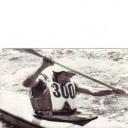Yahoo Answers is shutting down on May 4th, 2021 (Eastern Time) and beginning April 20th, 2021 (Eastern Time) the Yahoo Answers website will be in read-only mode. There will be no changes to other Yahoo properties or services, or your Yahoo account. You can find more information about the Yahoo Answers shutdown and how to download your data on this help page.
Trending News
What type of kayak to get?
What's the difference between a touring kayak and a recreational kayak?
I live on the Hillsborough River in Tampa. I'd mainly like to get a kayak for going up and down the river. There's a riverside bar/grill I like, plus I have other friends that live on the river. But also, I'd like to be able to take the kayak into the Gulf of Mexico sometimes. Being able to fish from it would be nice, but not a priority. Any suggestions?
Jim, what are you, a hooker?
4 Answers
- g_steedLv 71 decade agoFavorite Answer
A touring kayak is designed to paddle easily in a straight line and carry gear. Recreational kayaks are designed to play in, they turn easily and can be rolled with little effort.
You have two choices: a sea kayak or a slalom type kayak. A 13'2" whitewater kayak will suit your purposes as will the sea kayak. Try them both before buying. Take some lessons. Read about the sport. Buying your boat should be the last thing to do as you get into the sport. Don't neglect to try a canoe.
Source(s): Instructor - awaywaLv 61 decade ago
Recreational kayaks are designed for ease of use. They tend to be short (9-12 feet or so), wide, and flat-bottomed. This makes them stable on flat water and maneuverable. The downside is they'll be a bit slow and won't handle wind and choppy water very well. Most recreational kayaks have a large cockpit (the place where you sit) for easy entry and exit.
The term 'touring kayak' is rather broad. At the high end are full-on sea kayaks, typically 16-18 feet long and narrower than recreational kayaks. These are designed to go fast and straight over long distances. They can also handle rough water (assuming the paddler is skilled enough). Most have smaller cockpits with thigh braces that help allow you to control the boat with your lower body and even roll.
Some manufacturers produce 'transitional touring', 'crossover', or simply 'touring' kayaks which are somewhere between a recreational and sea kayak. These may be in the 12-16 ft range. They closely resemble sea kayaks, except that they're usually slightly wider and have more volume. They tend to be more stable than sea kayaks but still have rounded or V-shaped hulls which are faster and better in rough water. They're faster than a recreational kayak.
For the river (assuming a calm river), you could go with either a recreational, transitional, or sea kayak depending on how fast and far you want to go. For fishing, touring and sea kayaks won't do so well because of the reduced stability and small cockpit. If you don't mind getting exposed to the water a little, you could consider a sit-on-top fishing kayak. For the Gulf, you most likely would want a touring or sea kayak (and some lessons), unless you know of some reliably calm, protected areas.
- ?Lv 44 years ago
i could continually opt to fish from a take a seat on appropriate kayak. the better seating helps extra helpful casting. The open shipment section helps trouble-free accessability of your equipment. maximum fishing SOT's have a front hatch designed so as which you will stowe all your rods below deck. i like to stowe my stuff interior the hull, paddle contained in direction of the wind and waves to my spot, and then pull it out of the hatch and rig up for fishing. The open deck additionally helps you a place to wrangle a green fish devoid of as lots threat to the angler. in case you ever finally end up with a energetic flopping fish interior the cockpit of a take a seat interior kayak with you, you would be conscious of what I recommend! I certainly have been an authorized whitewater kayak instructor and an authorized sea kayak instructor. take a seat interior kayaks tend to be lighter and warmer. Your physique is likewise safer in whitewater extra beneficial than type II. there is no kayak which will do each and everything. bear in ideas that a kayak for all makes use of would be a grasp of none. Be extra specific with the form of paddling you would be doing the final public of time.
- Anonymous1 decade ago
Hi jugghayd,
I can offer some good advice, but I need to know more info on your height, weight, physical ability and how much $$ you're willing to part with.




